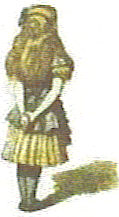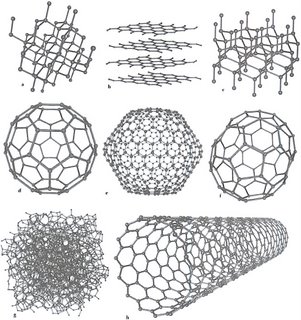Clementine color ratio composite image of Aristarchus Crater on the Moon. This 42 km diameter crater is located on the corner of the Aristarchus plateau, at 24 N, 47 W. Ejecta from the plateau is visible as the blue material at the upper left (northwest), while material excavated from the Oceanus Procellarum area is the reddish color to the lower right (southeast). The colors in this image can be used to ascertain compositional properties of the materials making up the deep strata of these two regions. (Clementine, USGS slide 11)
Clementine gravity experiment used measurements of perturbations in the motion of the spacecraft to infer the lunar gravity field
Like Grace, I choose to build an understanding of the gravity fields.
S-Band Transponder Doppler Gravity Experiment
The gravity experiment used measurements of perturbations in the motion of the spacecraft to infer the lunar gravity field. Clementine was equipped with an S-band microwave transponder and 2 S-band omni-directional high-rate antennas which were used for tracking by the NRL tracking station in Pomonkey, MD, and the NASA Deep Space Network. The frequency of the S-band transmission was measured every 10 sec, and the Doppler shift would give the relative velocity of the spacecraft towards or away from the Earth. Accelerations were calculated from changes in the velocity, and after accounting for the orbit, relative motions of Earth and moon, and Earth and solar gravity, these accelerations are converted to lunar gravity effects on the spacecraft.
The calculated lunar gravity field can be used to model subsurface lunar structure. The Pomonkey station could measure the velocity to an accuracy of 3 mm/sec, while the Deep Space Network stations could achieve about 0.3 mm/sec. Tracking was not possible on most of the lunar far side (120° to 240° long, -45° to 45° lat), when the moon was between the spacecraft and the Earth. In all, over 361,000 observations were made, approximately 57,000 at less than 1000 km altitude.
As our physical interpretation of this lovely pearl(earth) we live on has changed in the conceptual views of "times clocks and such," it became evident in GRACE that the world was quite different then what was first view from space in triumph.
As you might well know, all matter in the universe consists of small particles called atoms and each atom contains electrons that circle around a nucleus. This is how the world is made.
If one places an atom (or a large piece of a matter containing billions and billions of atoms) in a magnetic field, electrons doing their circles inside do not like this very much. They alter their motion in such a way as to oppose this external influence.
Incidentally, this is the most general principle of Nature: whenever one tries to change something settled and quiet, the reaction is always negative (you can easily check out that this principle also applies to the interaction between you and your parents). So, according to this principle, the disturbed electrons create their own magnetic field and as a result the atoms behave as little magnetic needles pointing in the direction opposite to the applied field*.
But of course may I infer "floating ships" over mineral deposits that were conducive to transportation in regards to the superconductors, floating frogs and such? An "attenuator of a kind" for the strength's and weaknesses of such composite gatherings?
But anyway before this "energy is considered in it's matter formed," how did such asymmetrical breaking from the origins not have ocnsidered such constitutions built on the very matters of the moon or such, in it's construction? In the end the gravity field is worth what?
At SLAC and elsewhere in the 1990s, precision measurements probing quantum effects from physics at higher energy scales were very successful. Precision electroweak measurements accurately predicted the mass of the top quark before it was discovered at the Tevatron at Fermilab, and they were cited in the awarding of the 1999 Nobel Prize to Veltmann and t'Hooft, which recognized their work in developing powerful mathematical tools for calculating quantum corrections and demonstrating that the Standard Model was a renormalizable theory. The discovery and mass measurement of the top quark at Fermilab's Tevatron and the precise Z0 boson mass measurement from CERN experiments added to well established values for other Standard Model parameters, to allow predictions for the only Standard Model parameter not yet measured, the Higgs mass.
What is a coupling constant? This is some number that tells us how strong an interaction is. Newton's constant GN, which appears in both Newton's law of gravity and the Einstein equation, is the coupling constant for gravitational interactions. For electromagnetism, the coupling constant is related to the electric charge through the fine structure constant a
While the idea in my mind is "the extension of all elements demonstrated in some way arising from the standard model, what said that "this element or that" could not have been created from a oscillatory expression of the big bang, and the particles that issue forth, are not without some geometrical expression as "inhernet structures" of that table?
As a "resonantial value" of a point along the length of the string?
Dr. Timmothy Stowe's physicists periodic table
So you see, I had a vision about the future. A time when I will work in space deploying satellites. But what said that future would not ascertain the requirements when our fossil fuels will have to be disregarded? Change the way the planets inhabitants will look forward to the benefits of such conceptual changes?
So this is a fictional posting then, about that future.



